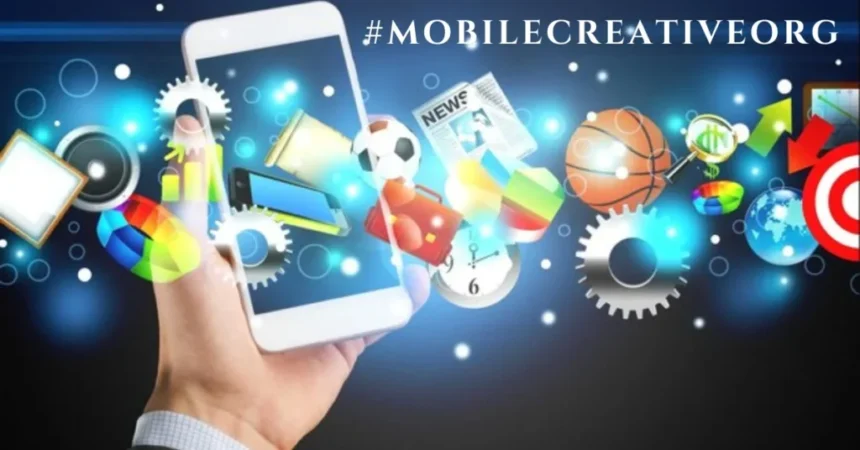Introduction to Mobile Creative Organization (MCO)
Welcome to the future of work! The traditional office is evolving, and a new wave of creativity is rising. Enter the Mobile Creative Organization (MCO). This innovative approach prioritizes flexibility, collaboration, and efficiency. Imagine a workspace that transcends physical boundaries, where teams can brainstorm ideas from anywhere in the world.
As businesses adapt to changing landscapes, MCOs are becoming essential for fostering creativity and driving success. Whether you’re a start-up looking to scale or an established firm seeking revitalization, understanding how to effectively implement this model can transform your operations. Ready to dive into what makes mobilecreativeorg so compelling? Let’s explore together!
Benefits of a Mobile Creative Organization
A Mobile Creative Organization (MCO) offers flexibility like no other. Team members can work from anywhere, sparking innovative ideas in inspiring environments. This freedom often leads to enhanced creativity and productivity.
Collaboration thrives in MCOs. Digital tools make it easy for teams to share thoughts and feedback instantly, bridging geographical gaps. Ideas flow seamlessly, resulting in a dynamic exchange that fuels projects.
Cost-effectiveness is another significant advantage. Organizations save on overhead expenses related to physical office spaces while investing those resources into talent and technology instead.
Employee satisfaction benefits as well. Workers appreciate the autonomy of choosing their workspace, leading to better morale and retention rates within the organization.
An MCO adapts quickly to changes in market trends or consumer needs. The ability to pivot swiftly gives companies a competitive edge, ensuring they stay relevant in fast-paced industries.

How to Create a Mobile Creative Organization
Creating a mobile creative organization involves several key steps. Start by fostering a culture that embraces flexibility and innovation. Encourage team members to think outside the box, allowing for diverse ideas.
Next, invest in collaborative tools that facilitate communication and project management. Platforms like Slack or Trello can keep everyone aligned, regardless of location.
Establish clear goals and roles for each member. This clarity helps prevent confusion and ensures accountability within your team.
Embrace remote work policies that support your team’s lifestyle. Flexible hours can boost creativity, as employees are more likely to produce their best work when they feel comfortable.
Prioritize regular check-ins through virtual meetings. These sessions help maintain connection and engagement while providing opportunities for feedback and idea sharing among team members.
The Role of Technology in MCO
Technology is a cornerstone of any mobile creative organization (MCO). It enables seamless collaboration among team members, regardless of their physical location. With tools like cloud storage and project management software, creatives can share ideas instantly and stay organized.
Communication platforms enhance connectivity. They allow for real-time discussions that spark innovation. Video conferencing tools bridge the gap when face-to-face meetings aren’t possible.
Moreover, automation plays a significant role in streamlining workflows. By automating repetitive tasks, teams can focus on what truly matters—creativity and strategy.
Data analytics also empowers organizations to make informed decisions quickly. Understanding audience behavior helps tailor creative efforts effectively.
Technology transforms how teams collaborate and produce work in an MCO environment. It fosters creativity while ensuring efficiency remains at the forefront of operations.
Tips for Maintaining a Successful MCO
To maintain a successful mobile creative organization, communication is key. Use various platforms to keep your team connected. Regular check-ins foster collaboration and build trust.
Encourage flexibility in work hours. This allows creativity to flourish when individuals feel most inspired. A relaxed schedule promotes productivity without the constraints of traditional office hours.
Invest in training and development opportunities for your team. Keeping skills sharp ensures that everyone stays on top of industry trends and innovations.
Promote a healthy work-life balance by setting clear boundaries between personal time and work obligations. Encourage breaks throughout the day to recharge minds.
Gather feedback regularly from your team members about workflows and tools they use. Adapting based on their insights can enhance efficiency and morale.
Celebrate achievements—big or small—to boost motivation within your mobile creative organization.

Case Studies: Companies with Successful MCOs
Several companies have embraced the mobilecreativeorg model, showcasing its potential. One notable example is Automattic, the parent company of WordPress. With a fully distributed team, they prioritize flexibility and creativity. Employees work from anywhere in the world, leading to increased innovation.
Another standout is Zapier. This tech company has built its entire workforce around remote collaboration tools. By focusing on asynchronous communication, they’ve nurtured a culture that thrives on creativity without traditional office constraints.
GitLab serves as yet another inspiring case study. Their all-remote approach allows them to tap into global talent while fostering an inclusive environment where diverse ideas flourish.
These organizations demonstrate how effectively implementing a mobile creative organization can lead to heightened productivity and employee satisfaction while maintaining high levels of creativity across teams.
Challenges and Solutions for Implementing MCOs
Implementing a Mobile Creative Organization (MCO) can present various challenges. One significant hurdle is communication. Remote teams may struggle with misunderstandings and delays in feedback.
To combat this, utilizing robust collaboration tools is essential. Platforms like Slack or Microsoft Teams facilitate real-time discussions, reducing miscommunication.
Another challenge involves maintaining productivity. Without a structured environment, some team members may feel unfocused or overwhelmed.
Setting clear expectations and using project management software helps keep everyone aligned on tasks and deadlines. Regular check-ins also promote accountability and motivation among team members.
Cultural differences can further complicate an MCO’s success, especially if the team spans multiple locations. Time zone disparities might hinder synchronous work efforts.
Encouraging flexibility within schedules allows for better alignment while fostering inclusivity across diverse cultures enhances teamwork and understanding.
Conclusion: Embracing the Future of Work with a Mobile Creative Organization
The rise of Mobile Creative Organizations (MCOs) represents a significant shift in how businesses operate. This model embraces flexibility, creativity, and collaboration across various locations. The benefits are clear: increased employee satisfaction, access to global talent, and the ability to adapt quickly to market changes.
As technology continues to evolve, MCOs can leverage innovative tools that facilitate communication and project management. By fostering a culture of trust and accountability within teams, organizations can thrive in this dynamic environment.
While challenges may arise during implementation—such as maintaining team cohesion or ensuring consistent workflows—they are surmountable with strategic planning. Many companies have already successfully navigated this transition by prioritizing effective communication strategies and investing in the right technological solutions.
Embracing mobilecreativeorg not only positions your company for success today but also prepares you for future developments in the workplace landscape. As remote work becomes increasingly normalized, adopting an MCO approach will empower teams to innovate continuously while remaining agile amidst ongoing change.





